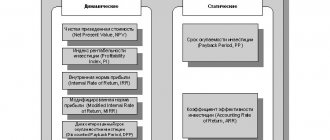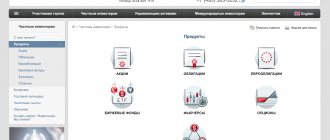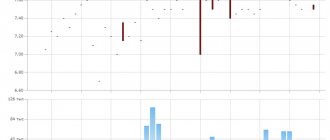Lazy Investor Blog > Need to Know
I’ll start with the definitions of the rating agency (hereinafter, for brevity, I will write RA): what it is and what they do. These are large consulting companies that conduct a comprehensive assessment of the creditworthiness, financial stability, as well as the quality of management of public companies and entire countries (sovereign ratings), regions and large municipalities. Assessment reports are not limited to matters within a company or country. For a comprehensive analysis, forecasts of macroeconomic trends, market conditions, as well as the ability of the assessed entity to withstand unfavorable external factors are required.
A little history
The last 20 years have been marked by rapid development of rating activities in almost all countries. If in the late 80s. There were no more than thirty rating agencies in the world, and rating activities were actually developed only in the USA, but now there are already more than 100 rating agencies in the world. Since the emergence of the first rating agencies in the United States at the beginning of the century, rating culture has remained a uniquely American feature. In this country, it has become common practice for issuers to obtain ratings. In European countries and Japan, the rating remained exotic for a long time and was assigned mainly to the largest companies with international operations. However, since the late 80s. The rapid development of rating activities in the world began, which in the last few years has turned into a real boom. According to a study by the Fitch rating agency, currently about 80% of global cross-border flows of borrowed capital are controlled by ratings. And this is not the limit.
The “rating boom” is a consequence of the globalization of financial markets, the formation of a large single economic and currency area, and the development of information and communication technologies. In addition, ratings are increasingly used to regulate the capital market. Many rating agencies in the world, including Expert-RA, are authorized agents of regulatory bodies. Finally, the most important regulatory document of the banking market, Basel 2, also widely uses ratings to calculate capital adequacy taking into account the risks of specific borrowers. There is a need to standardize a variety of debt financial instruments, to create an adequate risk assessment system when managing an investment portfolio, and it is precisely this need that credit ratings are designed to satisfy. After all, ratings are one of the most convenient and effective ways to solve the problem of information asymmetry.
For obvious reasons, Russia joined this process somewhat later than other countries. However, already now the rating in our country is beginning to acquire classical features - both in assignment and use. It is no secret that until recently the main function of ratings in Russia was exclusively PR. Ratings were practically not used when making investment decisions, to analyze the counterparty when concluding transactions, or to assess credit risks in financing. In addition, not every financier (let alone citizens inexperienced in economic matters) distinguished a rating (assessment of reliability and likelihood of fulfilling obligations) from a ranking (ranking on a quantitative basis).
TOP countries with high Fitch Ratings ratings
11 countries have the highest long-term Fitch credit rating (AAA) in foreign currency (as of 2021). It is interesting that many of them have a huge level of external debt, but even though they take a lot, they regularly return it (the amount of debt in $ is indicated in parentheses).
North America:
- USA (23.1 trillion!);
- Canada (1.6 trillion).
Australia and Oceania:
- Australia (1.5 trillion).
Asia:
- Singapore (633 billion).
Europe:
- Germany (2.56 trillion);
- Switzerland (1.84 trillion);
- Sweden (910 billion);
- Norway (615 billion);
- Netherlands (513 billion);
- Denmark (109 billion);
- Luxembourg (16.14 billion).
Read the interesting author’s article “Creditors or to whom the world’s population owes $244 trillion,” which describes the reasons for the huge external debt.
Table of countries by size of external debt.
| № | State | National currency (Ticker) | External debt ($ billion) | External debt ($) per capita | External debt to GDP in % | |
| 1 | Austria | Euro (EUR) | ECB | $345.9 billion | $98.7 thousand | 194% |
| 2 | Belgium | $566.4 billion | $136.2 thousand | 338% | ||
| 3 | Germany | $2.557 trillion. | $31.4 thousand | 71% | ||
| 4 | Greece | $589.6 billion | $52.7 thousand | 234% | ||
| 5 | Ireland | $2.747 trillion. | $542.1 thousand | 737% | ||
| 6 | Spain | $1.849 trillion. | $8 thousand | 137% | ||
| 7 | Italy | $3.16 trillion. | $52.66 thousand | 144% | ||
| 8 | Cyprus | $95.2 billion | $81.2 thousand | 107% | ||
| 9 | Latvia | $39.8 billion | $18.4 thousand | 131% | ||
| 10 | Lithuania | $29.5 billion | $8.4 thousand | 63% | ||
| 11 | Luxembourg | $16.14 billion | $4.55 million | 3600% | ||
| 12 | Malta | $46.2 billion | $112 thousand | 496% | ||
| 13 | Netherlands | $515.3 billion | $29.99 thousand | 64% | ||
| 14 | Portugal | $452.4 billion | $43.7 thousand | 190% | ||
| 15 | Slovakia | $68.4 billion | $12.5 thousand | 70% | ||
| 16 | Slovenia | $53.9 billion | $27.1 thousand | 115% | ||
| 17 | Finland | $158.6 billion | $111.3 thousand | 266% | ||
| 18 | France | $6.266 trillion. | $32 thousand | 98% | ||
| 19 | Montenegro | $650 million | $939 | 24% | ||
| 20 | Estonia | $26.7 billion | $21.2 thousand | 110% | ||
| 21 | Albania | Albanian Lek (ALL) | Bank of Albania | $1.55 billion | $ 497 | 21% |
| 21 | Belarus | Belarusian ruble (BYN) | NBB | $38.6 billion | $4 thousand | 79% |
| 22 | Bulgaria | Bulgarian Lev (BGN) | BNB | $37.8 billion | $5.4 thousand | 70% |
| 23 | Great Britain | pound sterling (GBP) | Bank of England | $2.681 trillion. | $119 thousand | 108% |
| 24 | Hungary | Hungarian Forint (HUF) | National Library of Hungary | $170.3 billion | $17.1 thousand | 130% |
| 25 | Denmark | Danish krone (DKK) | National Library of Denmark | $109.1 billion | $105.3 thousand | 244% |
| 26 | Iceland | Icelandic krona (ISK) | Central Bank of Iceland | $102 billion | $321.4 thousand | 699% |
| 27 | Moldova | Moldovan Leu (MDL) | National Library of Moldova | $3.9 billion | $1.1 thousand | 73% |
| 28 | Norway | Norwegian krone (NOK) | Norwegian bank | $614.8 billion | $139.8 thousand | 201% |
| 29 | Poland | Polish zloty (PLN) | National Library of Poland | $352.3 billion | $9.5 thousand | 71% |
| 30 | Romania | Romanian leu (RON) | National Library of Romania | $130.4 billion | $6 thousand | 71% |
| 31 | Russia | Russian ruble RUB | Bank of Russia | $453.75 billion | $3 thousand | 36% |
| 32 | Ukraine | Hryvnia (UAH) | NBU | $78.3 billion | $1.8 thousand | 63% |
| 33 | Czech | Czech crown (CZK) | National Library of the Czech Republic | $103.2 billion | $9.7 thousand | 52% |
| 34 | Croatia | Croatian Kuna (HRK) | Croatian NB | $63.3 billion | $14.1 thousand | 108% |
| 35 | Sweden | Swedish krona (SEK) | Bank of Sweden | $910 billion | $16 thousand | 18% |
| 36 | Switzerland | Swiss franc (CHF) | National Library of Switzerland | $1.844 trillion. | $191.5 thousand | 27% |
| Oceania | ||||||
| 37 | Australia | Australian dollar (AUD) | RB Australia | $1.486 trillion. | $66.9 thousand | 151% |
| 38 | New Zealand | New Zealand dollar (NZD) | RB NZ | $81.3 billion | $18.4 thousand | 45% |
| Asia | ||||||
| 39 | Azerbaijan | Azerbaijani manat (AZN) | Central Bank of Azerbaijan | $6.0 billion | $647 | 8% |
| 40 | Armenia | Armenian dram (AMD) | Central Bank of Armenia | $8.6 billion | $2.9 thousand | 75% |
| 41 | Vietnam | Vietnamese dong (VND) | GB of Vietnam | $68.3 billion | $732 | 40% |
| 42 | Hong Kong | Hong Kong dollar (HKD) | Hong Kong parole | $1.63 trillion. | $155.9 thousand | 290% |
| 43 | Georgia | Lari (GEL) | National Library of Georgia | $14.1 billion | $3.7 thousand | 90% |
| 44 | Israel | Shekel (ILS) | Bank of Israel | $96.3 billion | $12.3 thousand | 35% |
| 45 | India | Indian Rupee (INR) | RB India | $550 billion | $423 | 27% |
| 46 | Indonesia | Indonesian Rupiah (IDR) | Bank Indonesia | $223.8 billion | $882 | 26% |
| 47 | Iraq | Iraqi Dinar (IQD) | Central Bank of Iraq | $59.5 billion | $1.8 thousand | 27% |
| 48 | Iran | Iranian rial (IRR) | Central Bank of Iran | $15.6 billion | $193 | 4% |
| 49 | Kazakhstan | Tenge (KZT) | NB RK | $161.4 billion | $9.1 thousand | 94% |
| 50 | Kyrgyzstan | Som (KGS) | NB KR | $3.7 billion | $600 | 54% |
| 51 | China | Chinese Yuan (CNY) | National Bank of China | $1.607 trillion. | $1.15 thousand | 14% |
| 52 | Kuwait | Kuwaiti Dinar (KWD) | Central Bank of Kuwait | $34.4 billion | $12.5 thousand | 19% |
| 53 | Malaysia | Malaysian ringgit (MYR) | BNM | $100.1 billion | $3.3 thousand | 32% |
| 54 | UAE | UAE Dirham (AED) | Central Bank of the UAE | $163.8 billion | $24.2 thousand | 41% |
| 55 | Pakistan | Pakistani Rupee (PKR) | GB of Pakistan | $66.4 billion | $346 | 22% |
| 56 | The Republic of Korea | South Korean won (KRW) | Bank of South Korea | $430.9 billion | $8.7 thousand | 36% |
| 57 | Saudi Arabia | Saudi Riyal (SAR) | ADO SA | $149.4 billion | $5.4 thousand | 20% |
| 58 | Singapore | Singapore dollar (SGD) | DKUS | $632.6 billion | $210.8 thousand | 346% |
| 59 | Tajikistan | Somoni (TJS) | National Library of Tajikistan | $2.1 billion | $270 | 28% |
| 60 | Thailand | Thai baht (THB) | Bank of Thailand | $86.1 billion | $1.2 thousand | 21% |
| 61 | Turkmenistan | New Turkmen manat (TMT) | Central Bank of Turkmenistan | $5.0 billion | $934 | 31% |
| 62 | Türkiye | Turkish lira (TRY) | Central Bank of TR | $685.2 billion | $4.4 thousand | 44% |
| 63 | Uzbekistan | Uzbek sum (UZS) | Central Bank of the Republic of Uzbekistan | $17.3 billion | $520 | 33% |
| 64 | Philippines | Philippine Peso (PHP) | Central Bank of the Philippines | $72.8 thousand | $676 | 27% |
| 65 | Sri Lanka | Sri Lankan Rupee (LKR) | CB SHL | $1.2 thousand | $42 | 66% |
| 66 | Japan | Japanese Yen (JPY) | Bank of Japan | $13.5 trillion. | $76.8 thousand | 295% |
| North America | ||||||
| 67 | Dominican Republic | Dominican Peso (DOP) | Central Bank of the DR | $18 billion | $1.7 thousand | 30% |
| 68 | Canada | Canadian dollar (CAD) | Bank of Canada | $1.613 trillion. | $38.2 thousand | 88% |
| 69 | Cuba | Cuban Peso (CUP) | Central Bank of Cuba | $23.4 billion | $2.1 thousand | 32% |
| 70 | Mexico | Mexican Peso (MXN) | Bank of Mexico | $1.444 trillion. | $10.7 thousand | 27% |
| 71 | Panama | Balboa (PAB) | NB of Panama | $15.2 billion | $4.2 thousand | 37% |
| 72 | USA | US dollar (USD) | Fed | $23.14 trillion. | $69.6 thousand | 135% |
| South America | ||||||
| 73 | Argentina | Argentine Peso (ARS) | Central Bank of Azerbaijan | $111.5 billion | $2.5 thousand | 23% |
| 74 | Brazil | Brazilian real (BRL) | Central Bank of Brazil | $3.195 trillion. | $2.3 thousand | 122% |
| 75 | Chile | Chilean Peso (CLP) | Central Bank of Chile | $119 billion | $6.8 thousand | 42% |
| Africa | ||||||
| 76 | Algeria | Algerian Dinar (DZD) | Bank of Algiers | $3.4 billion | $97 | 2% |
| 77 | Egypt | Egyptian pound (EGP) | Central Bank of Egypt | $48.7 billion | $561 | 19% |
| 78 | Morocco | Moroccan Dirham (MAD) | Bank of Morocco | $36.5 billion | $1.1 thousand | 35% |
| 79 | Nigeria | Naira (NGN) | Central Bank of Nigeria | $15.7 billion | $89 | 5% |
| 80 | Tunisia | Tunisian Dinar (TND) | Central Bank of Tunisia | $26.9 billion | $2.4 thousand | 56% |
| 81 | South Africa | South African rand (ZAR) | SARB | $139 billion | $2.8 thousand | 39% |
Through the eyes of an American investor
The rating market in Russia, of course, is still quite poorly developed. And as often happens, it is widely believed that only large global agencies (S&P, Moody's, Fitch) will be able to work on it. This statement is, to put it mildly, controversial. So-called "international" rating agencies essentially represent the view of borrowers and issuers from North American institutional investors. They do not sufficiently take into account national specificities in developing countries. In this regard, the Asian currency crisis became the most important lesson for global rating practice, since it demonstrated that the largest rating agencies, whose history goes back almost a hundred years, were really unprepared for rating activities in emerging markets. One of the main analytical sources for assigning a rating is the statistical databases of agencies based on the ratio “rating level - probability of default.” However, these databases were compiled in developed markets, primarily the United States, and the Asian crisis actually confirmed that these patterns do not apply in developing and transition markets. Chaotic changes in the ratings of global rating agencies during the crisis only led to its deepening and more rapid spread to other regions.
The danger of misuse of the rating has been recognized by international organizations. New standards for regulating the activities of rating agencies are being developed. However, these standards are still under development and the rating activities of global agencies still pose a threat. Of course, this does not mean their lack of professionalism or insufficiently careful analysis. It’s just the specificity of the approach when assigning ratings.
In addition, the ratings of global agencies began to acquire an increasingly strong political overtones. They represent a powerful tool for influencing the financial system. Several years ago, one of the New York Times journalists wrote that since the end of the Cold War, the world has known two superpowers: the United States and Moody's. While the United States can destroy almost any enemy militarily, Moodys is capable of destroying a state financially by assigning a low rating. This is, of course, a joke, but there is a lot of harsh truth in it.
Of course, not a single Russian rating agency can boast of such a long history of work as, say, S&P or Moody's, but for working with partners in the domestic market, the ratings of national rating agencies seem more adequate and convenient. Users of ratings from national agencies are primarily domestic investors who need to take into account national business practices, while users of ratings from Western agencies are American investors who are more accustomed to evaluating businesses around the world by their own standards. For an American investor, of course, any sector of the Russian economy, if it is not, say, non-ferrous metallurgy or the oil industry, seems extremely high-risk and not suitable for investment.
Among other things, national agencies have a significant advantage in the price of the rating: for them it usually ranges from 3 to 30 thousand US dollars, while for global agencies it ranges from 50 to 100 thousand US dollars. National rating agencies pay special attention to rating support after assignment, which is less common in the practice of global agencies. In addition to ratings, national agencies offer a wide range of information and analytical services, that is, they follow the goal of creating an effective infrastructure of the financial markets in which they operate, and not the goal of selling a separate product; global agencies cannot afford to do this to the same extent, focusing more on international markets. National agencies have a deeper understanding of the specifics of specific markets, which makes their assessments in these markets more effective. But more importantly, national agencies have a fundamental interest in developing the national debt market to expand their own business, and this is a significant guarantee of the quality and objectivity of their assessments.
Trading training at Masterforex-V Academy
Trading attracts more and more people. Just imagine, every second American is a stock market investor! Among Russians, the figure is much more modest – only a few percent. However, the potential is quite large. Queries in Yandex, Google and other search engines “how to become a trader”, “how to make a lot of money”, “how to work on Forex” and other similar ones are in the TOP.
So how to become a successful trader?
The answer to this question is simple - first you need to learn how to trade! Come to the Masterforex-V Academy, where training is conducted by traders who know not only in theory, but also in practice how to earn a lot and consistently over a long distance.
Check out some freely available copyrighted materials:
- Can Masterforex-V Academy traders earn 2000% per month (facts);
- Swaps: how to earn, and not lose, $3,000 in a year;
- Futures in simple words about complex things from Masterforex-V;
- What are the roots of the drain of 1.5 thousand deposits in 2015-2018 on the Gerchik TS and its danger for traders?
- Eric Nyman: merits, myths, failures.
Click on the link below and start your journey to the financial top of the world right now!
Sincerely, wiki Masterforex-V - free (school) and professional Masterforex-V training courses for working on Forex, stock, futures, commodity and cryptocurrency exchanges.
First steps
The first Russian rating agencies began to appear in Russia immediately after the financial market began to take shape as a result of privatization. Their development continued quite successfully until the 1998 crisis following the activation of the financial market and fairly large trading volumes on stock markets. The importance of rating activities was recognized at the state level: the President of the Russian Federation even issued a special decree on the need to develop rating activities. The sharp decline in investment activity after the 1998 crisis led to a decrease in demand for information about Russian companies and securities. Many of the well-known rating agencies that existed before the crisis ceased their rating activities. However, ratings before the crisis were little similar to credit ratings in the classical sense (with the exception of a few credit ratings assigned by international agencies). In most cases, these were assessments closer to rankings or remote ratings (based on public information about the company), with a small set of assessed indicators.
A rating culture in the classical sense began to take shape in Russia only after the crisis, with the beginning of real economic growth and the growth of the loan capital market. Only during this period did such concepts as “quality of corporate governance”, “information transparency”, “reputation” begin to acquire real significance for Russian companies. Expert RA assigned the first credit ratings to insurance companies, and a joint venture was formed between the Interfax rating agency and the global rating agency Moody's , and Standard & Poor's announced the takeover of the Russian rating agency EA-Ratings.
Russian rating agencies (as well as international ones) can be divided into two main types: universal and specialized agencies. Universal rating agencies issue ratings to various companies in both the financial sector and other industries, and in addition to this, they produce a number of other information and analytical products. Such agencies include Expert RA, Moody's-Interfax, and Russian branches of international agencies. Specialized agencies analyze a certain segment (say, the banking market) and issue ratings to participants in this market (examples - NAUFOR, RusRating, AK&M). The specificity of the ratings of the RusRating agency is that they are based on an analysis of public information, and therefore they are difficult to classify as classic credit ratings. On the other hand, in world practice, cases of just such an approach to assessing financial stability are not uncommon.
When using ratings for regulatory purposes in Russia, it is necessary to solve two primary problems: increasing the number of assigned ratings (in each market, companies with ratings should dominate) and selecting effective and conscientious agencies. Here we are finally approaching the question of which Russian rating agencies will be recognized by the FSSN. Apparently, the Ministry of Finance will accredit agencies after a rigorous selection process. The main principle of such selection should be to assess the sufficiency of resources for the agency to conduct a full-fledged rating analysis, independence and reputation in the professional community. "Expert RA" actively participates in this process, including developing rules and norms for rating activities, collaborating with the Federal Insurance Service. The comparison of rating scale models proposed in this article reflects the personal opinion of the author, based on an analysis of the methodology for determining rating classes of various rating agencies. The table shows the comparison on a national scale for each agency (sovereign rating is not taken into account).
| Appendix 1. Comparison of the rating scale of various agencies | ||||||
| Interpretation of the rating | AM Best | FITCH | Moody's | Standard & Poor's | Weiss | "Expert RA" |
| Highest reliability | A++ | AAA | Aaa | AAA | A+ | A++ |
| High reliability | A+, A | AA+, AA, AA- | Aa1, Aa2, Aa3 | AA+, AA, AA- | A, A- | A+ |
| Sufficient | A-, B++ | A+, A, A- | A1, A2, A3 | A+, A, A- | B+, | A |
| reliability | ||||||
| Acceptable reliability | B+, B | BBB+, BBB, BBB- | Baa1, Baa2, Baa3 | BBB+, BBB, BBB- | B, B- | B++, B+ |
| Satisfactory reliability | B-, C++, | BB+, BB, BB- | Ba1, Ba2, Ba3 | BB+, BB, BB- | C+, C, C- | B, C++ |
| Low reliability | C+, C, | B+, B, B- | B1, B2, B3 | B+, B, B- | D+, D, D- | C+ |
| Very low reliability | C-, D | CCC+, CCC, CCC- | Caa, Ca | CCC+, CCC, CCC- | E+, E, E- | WITH |
| Unsatisfactory reliability/Bankruptcy | E, F, | D | C | CC, C, D | F | D |
Fitch Ratings presentation
Of all the big three, Fitch Ratings is the smallest rating agency, but its weight in the financial world is very high. The company has two large offices - in New York and London, as well as a number of regional subsidiaries, for example, Fitch Ratings Japan with an office in Tokyo.
Like Moody's, Fitch Ratings traces its history back to the founding of the publishing house. Is it any surprise that journalists founded or were at the origins of many reputable financial companies. Let's remember the famous Dow Jones Industrial Average, created by Wall Street Journal editor Charles Dow. Journalists are among the first to receive information, moving it (with their edits!) further. Thesis: whoever owns the information owns the world, no one has yet canceled it.
On December 24, 1914, Christmas Eve, publisher John Knowles Fitch founded the Fitch Publishing Company.
Fitch Publishing's financial information quickly gained popularity among analysts, brokers and investors. Brokers and traders have realized how convenient it is to use Fitch ratings to assess the prospects of investments.
Significant dates for Fitch Ratings:
- December 24, 1914 – foundation;
- 1924 - the appearance of a rating scale (AAA - maximum level of creditworthiness, D - minimum);
- 1997 - merger with the British company IBCA Limited and the transfer of control over Fitch (through ownership of a controlling stake) into the hands of the holding company Fimalac SA with its head office in Paris;
- 2000 - Fitch Ratings becomes the owner of Duff & Phelps Credit Rating and Thomson BankWatch;
- October 2006 – the emergence of Derivative Fitch, a company specializing in credit derivatives ratings;
- October 2011 – IBM buys software manufacturer Algorithmics, a subsidiary of Fitch Ratings, for $387 million;
- 2012 – Hearst Corporation becomes the owner of 50% of Fitch Ratings shares (the company has been among shareholders since 2006, but remained among minority shareholders until 2012);
- December 2014 – Hearst Corporation increases its stake in Fitch to 80%;
- April 2021 - Hearst Corporation buys the remaining stake from Fimalac and becomes the sole owner of Fitch.
Notice how the stock price of the Fitch rating company has increased in just 4 years:
- $1.965 billion – this is how much the 30% stake was worth in 2014, i.e. $65.5 million for 1% shares ;
- $2,800 billion - this is how much they paid in 2021 for a 20% stake, i.e. $140 million for 1% shares .
Unlike Moody's, whose shares under the ticker MCO are traded on the NYSE - the world's No. 1 stock exchange according to the author's rating of the Masterforex-V Academy, Fitch securities are not listed on exchanges.
What are rating agencies? What is the point of their work?
They assess the risks of investing in companies or entire countries and help to understand who is a potential bankrupt and who is a promising player in the market. When assessing, experts rely on open and closed reports on financial performance, market positions, plans and many other indicators. The assessment is also influenced by risk factors - the stability and prospects of the economy as a whole, the quality of supervision in the relevant area. To put it simply, they study a country or company for its ability to fulfill loan obligations.
Do the forecasts of rating agencies often fail to come true?
Perhaps the most notorious cases occurred with the energy corporation Enron, which had an investment grade rating (above BBB-) almost until bankruptcy. The Big Three also failed to predict Russia's default in 1998, and the same thing happened in Argentina in 2001.
The human factor also plays a role. “Yes, agencies make mistakes quite often. And the whole “troika” can give an incorrect forecast. After all, people work there, and they tend to make mistakes,” says head of the analytical department Andrei Dirgin.
Why do I need to know about this, how does it affect me?
Speaking globally, from agency reports you can understand the economic situation in your country and find out the forecast for two to three years.
Typically, the economy is influenced by many factors: government income, inflation rate, foreign policy, what are the main budget items, etc.
The rating only reflects the general situation with the country’s economy and summarizes all these factors. With a low rating, it will be more difficult for the state and companies to obtain loans, the number of investments will decrease - accordingly, the country’s budget will decrease and this will affect the income of the population.











